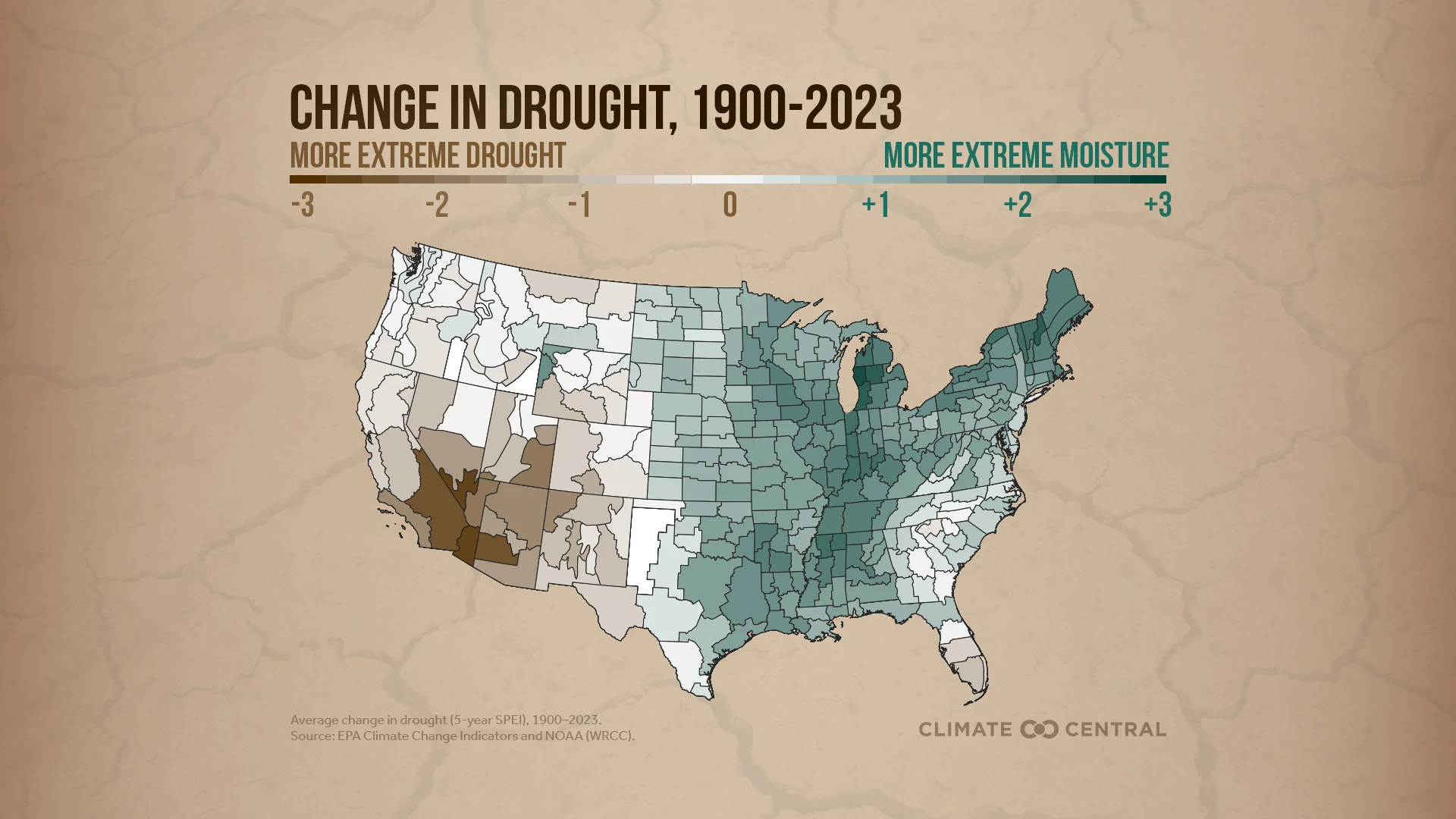
Climate Matters
Warmer, Thirstier Air Worsens Drought
Growing atmospheric thirst, driven by human-caused warming, is making droughts worse in the western U.S. and around the world.
There are several different types of drought, characterized by a deficit of precipitation (meteorological), soil moisture (agricultural), or runoff (hydrological).
The U.S. has experienced significant droughts of all three types in the past decades and centuries. Drought can lead to short- and long-term impacts on water supplies, agriculture, ecosystems, wildfire risk, public health, and more.
Warming air increases the potential evaporation from the land and transpiration from plants. This process increases the water available for precipitation in some areas but contributes to drying in other areas. Many, but not all, regions of the world have seen an increase in drought. But in many parts of the world, trends in droughts are unclear. In these regions, scientists have low confidence in the ability to tie changes in droughts to human-caused climate change.
The southwestern U.S. is one region of the world where trends are clear: droughts are increasing and there is evidence that the increase is tied to human-caused climate change.
For example, the recent southwestern megadrought (2000-2021) was the most severe of the past 1,200 years, and over 40% of the drought’s severity is attributed to human-caused climate change. Risks of severe and prolonged megadroughts in the Southwest are projected to intensify over this century with continued warming.
As the climate continues to warm, the western U.S. also faces increasing risks of hydrological drought due to declining snowpack and earlier spring melt.
Throughout this century, human-caused warming is projected to result in drier summer soils across much of the U.S. and particularly in the Southwest.
According to the latest IPCC reports, warming since the 1950s has also increased the frequency of concurrent heatwaves and droughts on a global scale. Throughout 2020 and 2021, the western U.S. suffered a series of compound heat, drought, and wildfire events that impacted communities and ecosystems and caused more than $38 billion in damages.
Updated: May 2025
These resources explore the science, trends, and local impacts of drought
Search our resource library